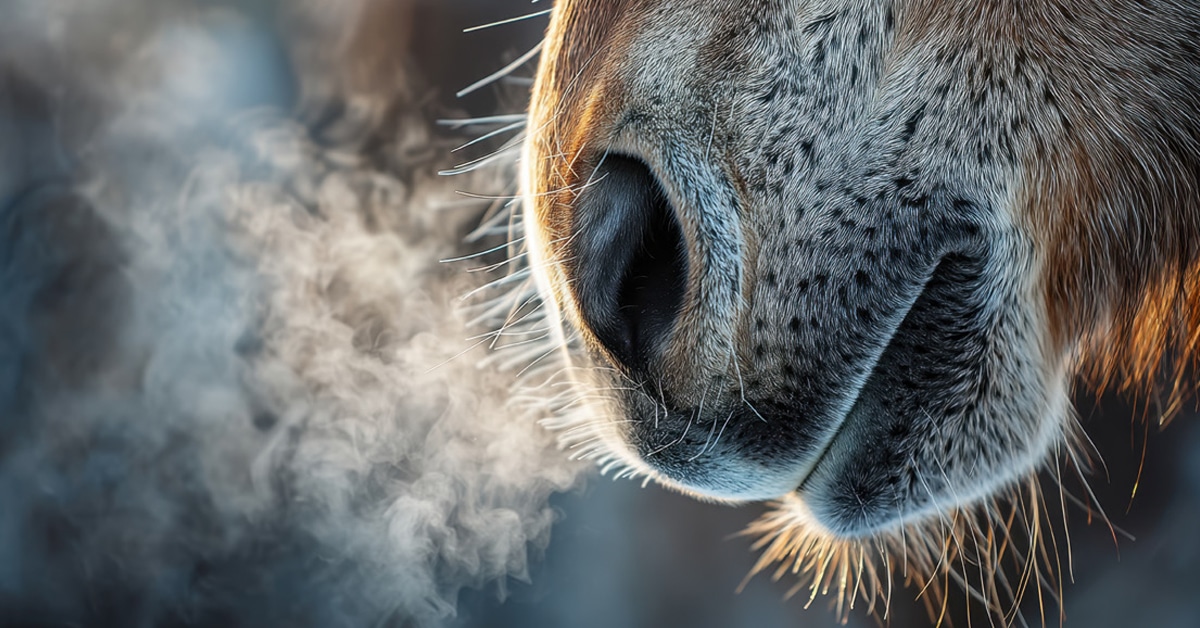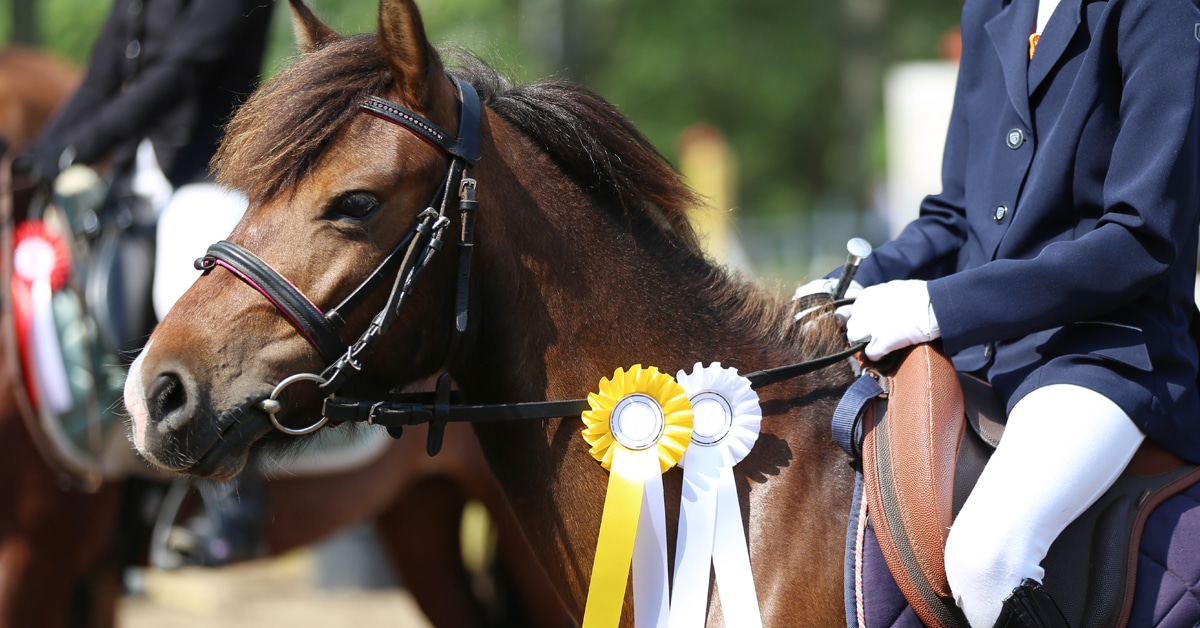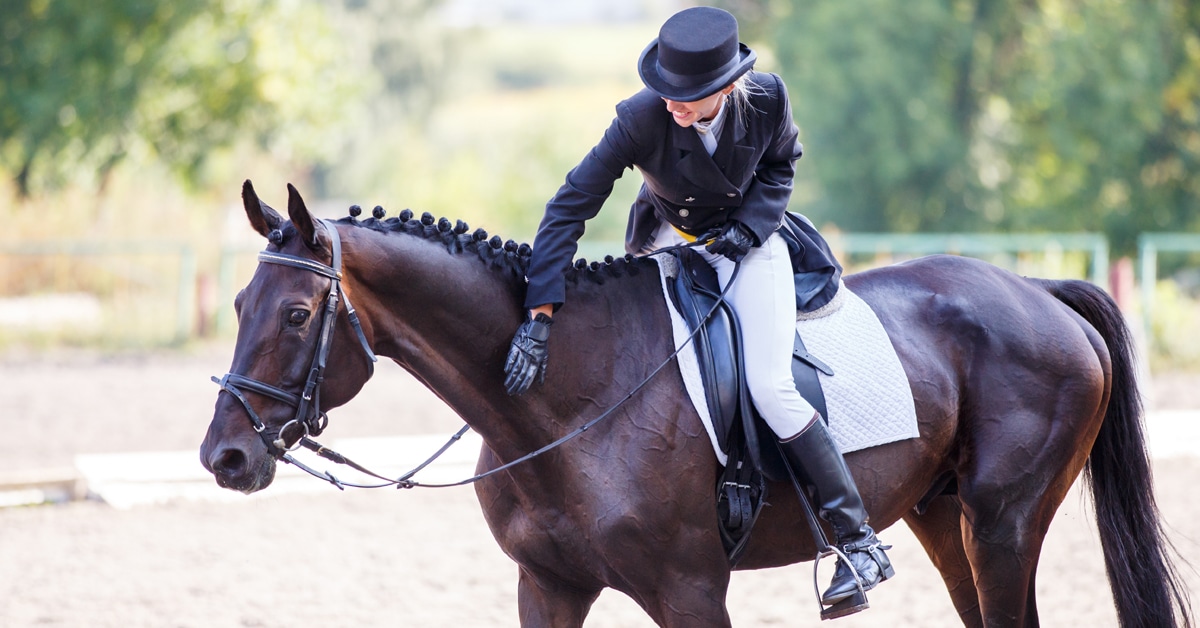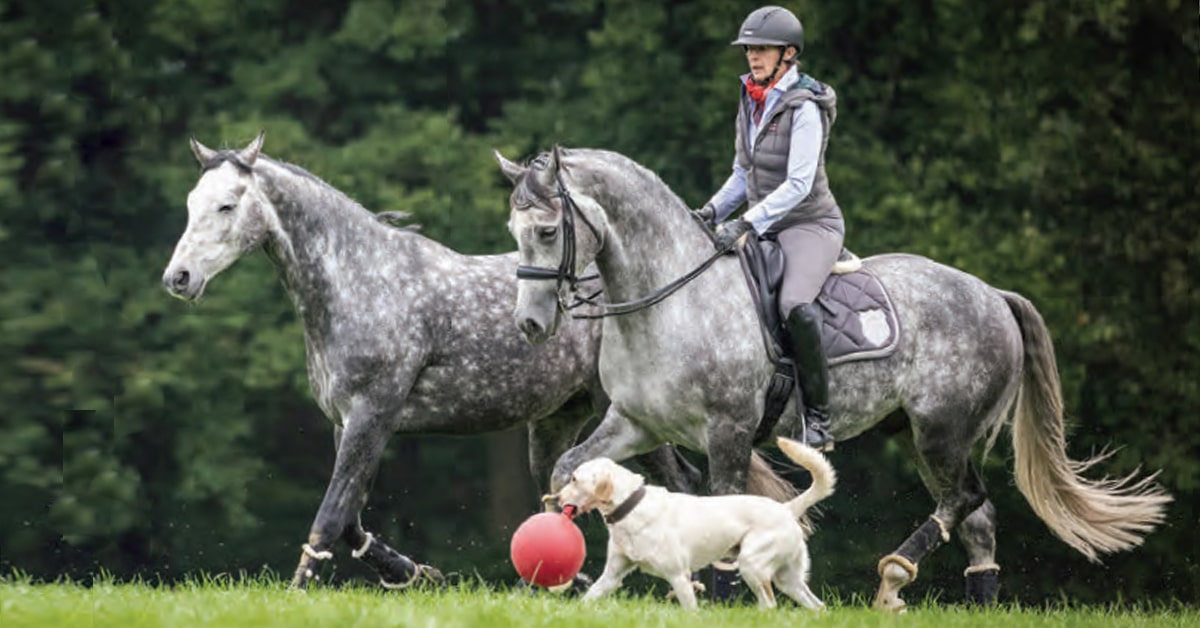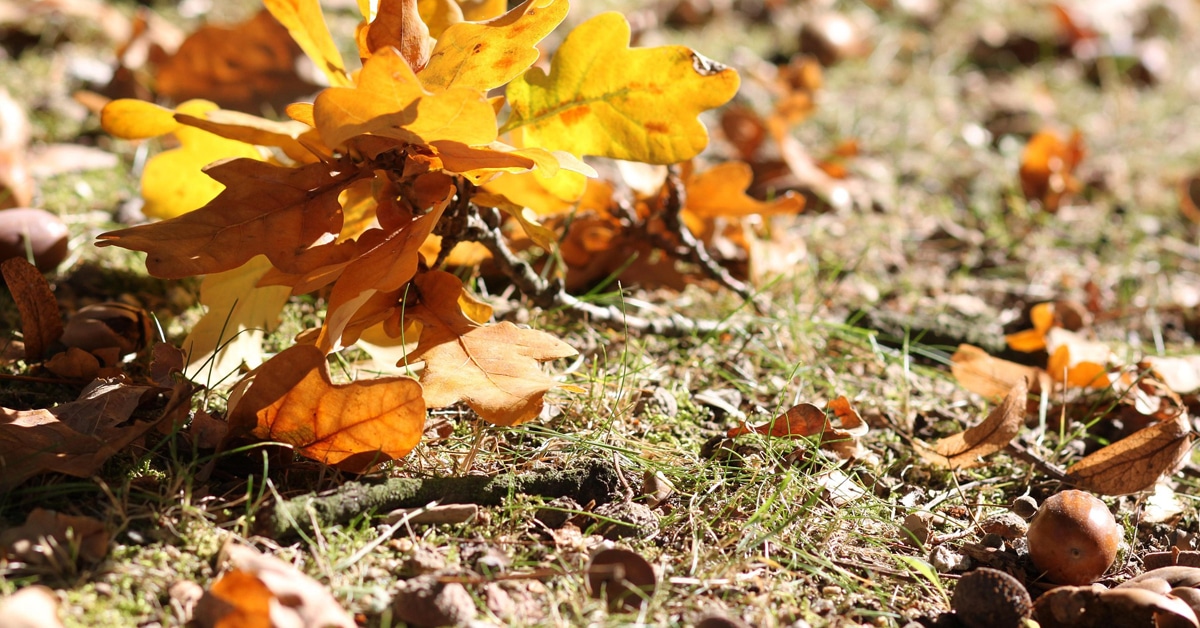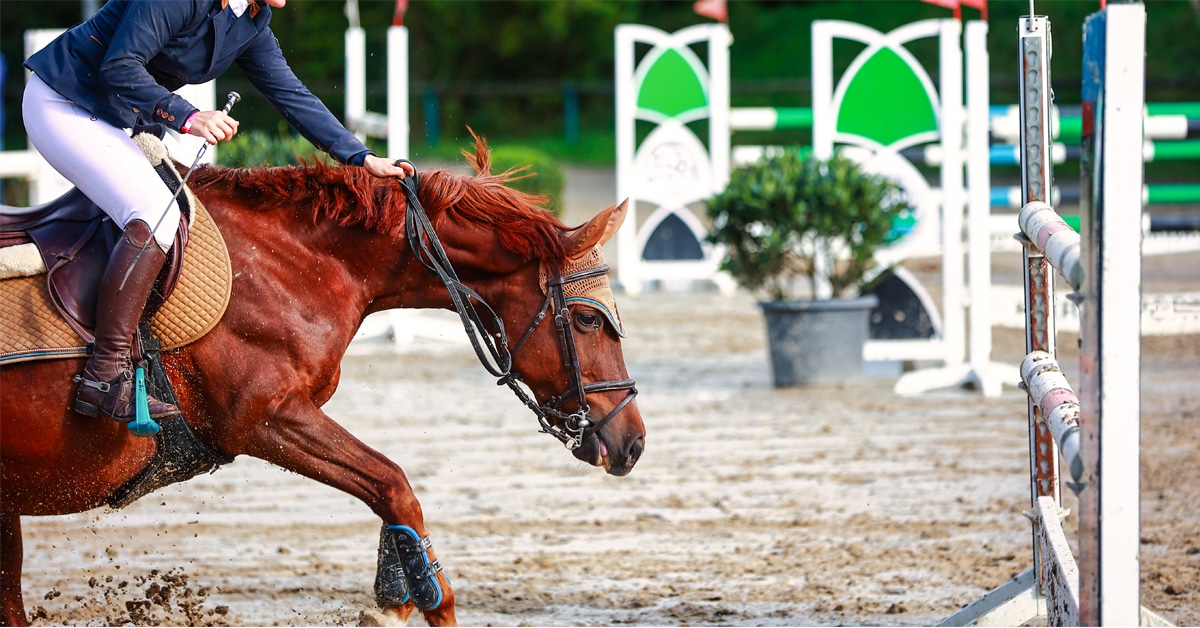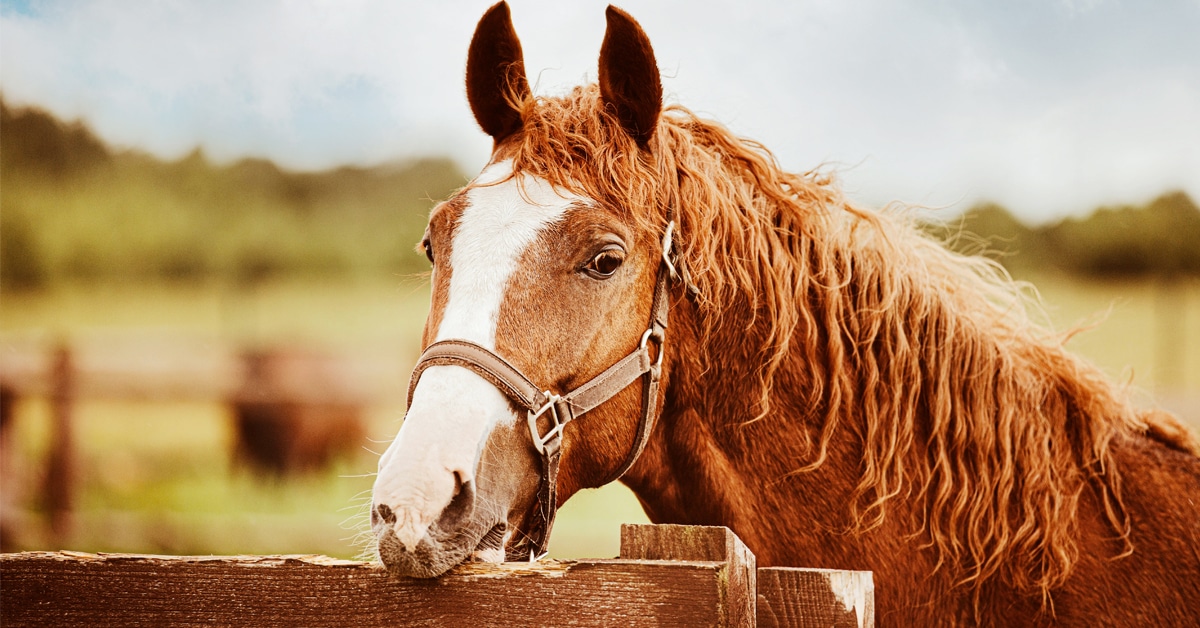The sound of a horse chewing on a wooden part of the facilities might just be worse than nails on a chalkboard to horse and barn owners. Whether fence rails, trees in a paddock or the side of the barn, wood chewing is a behaviour much maligned – and often misunderstood – that horses may perform. Some horses chew wood only briefly, while others may perform the behaviour seasonally or even year-round.
To address the problem of wood chewing, understanding why it may occur is a critical first step towards resolution.
Wood Chewing: Differential “Diagnoses”
Before we can discuss the causes of and solutions for wood chewing, it’s worth differentiating between wood chewing and other similar-looking, but very different, behaviours.
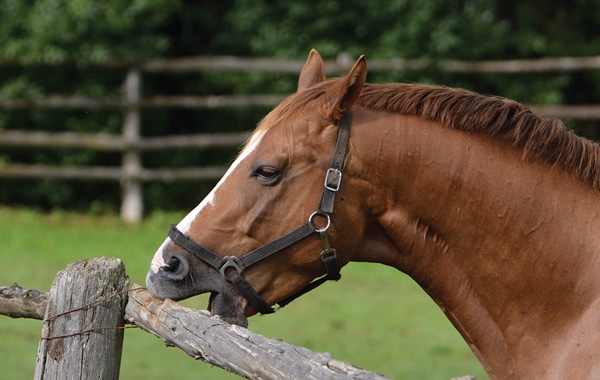
Cribbing, or crib biting, can be mislabelled as wood chewing. When a horse cribs, he grasps an object with his incisor teeth and pulls back, tensing the neck muscles and often making a grunting sound. (AdobeStock photo)
Crib-biting, also called cribbing, is a behaviour that may be mislabelled as wood chewing if it occurs on wooden surfaces. During cribbing, a horse grasps an object (usually fixed) with their incisor teeth and pulls back, tensing the neck muscles and often making a grunting sound. Cribbing is what’s known as a stereotypic behaviour: one that is repetitive and unvarying, which appears (to the observer) to serve no purpose. Stereotypies have been called a “disease of domestication,” as they aren’t seen when animals live in natural conditions.
Indeed, stereotypies are crafted by management practices that do not meet the animal’s needs. Behaviours like cribbing are usually created long before they begin to express. For example, even though the development of cribbing has been linked to factors which may occur during premature weaning (i.e. at four to six months of age), it may not begin until later in life. To date, while it may be misidentified as cribbing, there is no consensus among researchers if wood chewing can be considered a stereotypic behaviour.
Redirected aggression may also be mislabelled as wood chewing. When animals are stressed, frustrated or caused pain by a trigger, but are unable to interact directly with the trigger, they may lash out in anger at a nearby object that is not the trigger. For example, a horse tied in a barn alley, who experiences pain as a result of being brushed or saddled, may bite nearby accessible wooden objects such as a stall door or barn wall.
When horses display stereotypies or redirected aggression, they are usually experiencing negative emotional states, and thus compromised welfare. In such instances, the horse should be assessed by a qualified behaviour professional.
Wood Chewing Causes
Understanding the horse’s species-specific needs is critical to understanding issues like wood chewing. We often think of horses as exclusively being grazers: animals which only eat graminoids, or herbaceous plants with a grass-like morphology. But depending on the availability of suitable forage, whether due to habitat or seasons, horses may also eat higher-fibre woody plants such as shrubs.
The gastrointestinal tract of the horse has evolved to be “trickle fed” forage on a near-continual basis. This requires the horse to spend most of its day apprehending, chewing and swallowing suitable foodstuffs. On average, a horse grazing on pasture will chew approximately 60,000 time per day. Horses fed quickly-consumed set feedings will chew much less. Saliva production occurs predominantly due to the action of chewing.
In contrast, horses continually produce stomach acid – approximately 36 litres a day – whether chewing or not. In addition to aiding in the early stages of digestion, one of saliva’s actions is that it helps buffer stomach acid. When horses are allowed to select, chew and digest as they have evolved to do, on a near continual basis, the volume of saliva they produce is comparable to the volume of stomach acid produced in a 24-hour period – that’s approximately two standard water buckets full of stomach acid. When faced with an absence of suitable forage, horses may turn to the next best choice to fill their chewing and digesting needs: woody materials.
Horses unable to engage in a wide range of normal, species-typical behaviours may also engage in wood chewing to cope with the stress of daily life. Chewing may fill a period of time that, in an impoverished environment (one that lacks opportunities, stimulation, or basic necessities and negatively impacts physical and mental well-being), would otherwise see the horse standing still. Just like with people, each horse has a unique character that affects how they will respond to a stressful situation. If two people were placed in an impoverished environment, we may see two totally different responses; one person may become despondent and show a decrease in activity, appearing depressed, while the other may find more active ways to cope, such as by shredding the drywall. Neither person is “bad,” they are merely trying to cope in an environment that fails to meet their basic needs.
Nutritional Deficiencies or Medical Conditions
Nutritional deficiencies may also cause horses to chew wood. For example, pasture grasses may be low in fibre, and eating wood may satisfy that need. When faced with eating a low-fibre diet, horses will actively work to consume more fibre, even if that means eating the barn walls or fences. Low-fibre diets can also increase colic risk, as fibre allows the digestive tract to function as it was designed.
Gastrointestinal distress, which in turn causes emotional distress, can occur when animals are not fed a diet that suits their needs. Additionally, chewing wood may also be a sign of other nutritional inadequacies such as a deficit in certain micronutrients. Consulting with a qualified equine nutritionist is advised when horses are excessively chewing wood.

Wood chewers can make a mess of fences, barn walls, stall doors – whatever is handy. (Nicole Kitchener photo)
While chewing and ingesting safe varieties of wood can be harmless, there is also a possible increased risk of health problems. Pressure-treated wood contains harmful chemicals. While rare, oral splinters, colic or the development of enteroliths (intestinal stones) can also occur. Whether wood chewing causes gastric ulcers is bit of a “chicken or the egg” question. Do horses start chewing wood to alleviate physical and psychological discomfort from imposed fasting that creates ulcers? Or do ulcers develop as a result of chewing wood? Either way, a veterinary exam is also advised when a horse owner is faced with a wood-chewing horse.
Solutions
After first consulting with a veterinarian to ensure the cause of the wood chewing isn’t due to underlying medical conditions, consulting with an equine nutritionist is a logical next step. It is then our obligation as caregivers to assess our management practices and determine if there are areas where we can better meet the horse’s physical, mental and emotional needs. I summarize these basic needs of all horses as the “3 F’s”: Friends, Forage and Freedom. When horses are given ample opportunity to be with other horses, forage ad lib on a suitable diet and to engage freely in a wide range of species-typical behaviours, problems such as wood chewing may self-resolve.
While it is common to simply prohibit a horse from chewing wood, whether by painting fence rails with bitter-tasting products, or by using electric fencing or metal coverings on wooden surfaces, such approaches do not get to the heart of why the behaviour is happening. As a result, opportunities to correct possible physical conditions or management-based root causes will be lost, and the horse will still be dealing with those issues. To compound matters, removing the ability to chew wood may increase a horse’s frustration if it removes an outlet for mitigating stress.
It can be difficult at first to consider the role we humans may play in creating unwanted behaviours in horses. However, an attitude shift in how we view behaviours can have profound and lasting impacts. Not only do we become better able to troubleshoot behaviour problems when they arise, but our ability to take steps to improve a horse’s quality of life while also resolving issues is enhanced. Horses whose needs are being met are healthier, happier and much better able to learn and perform.
***
(This article originally appeared in the 2025 Canadian Horse Annual – buy your copy here.)
The Latest

